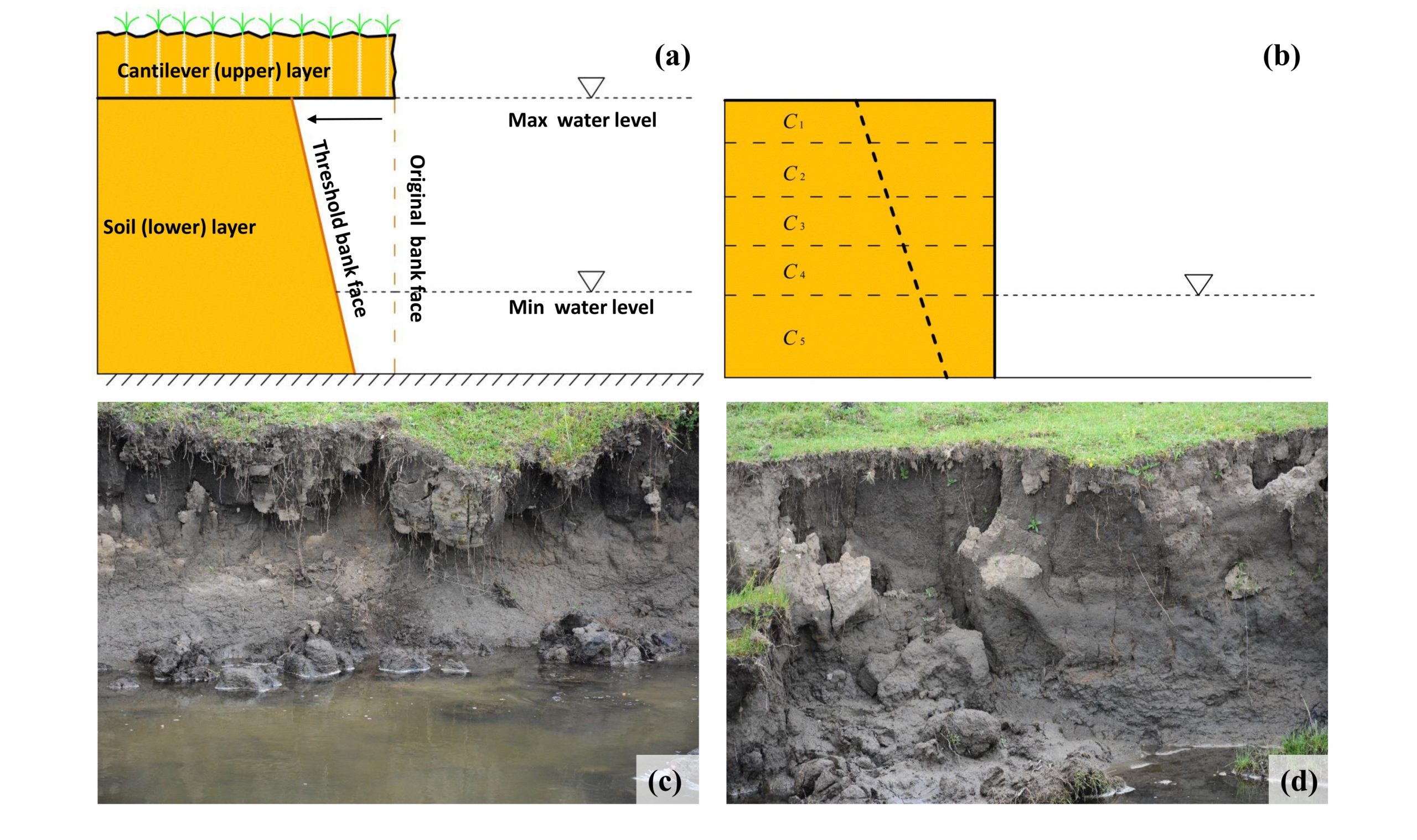Morphodynamic mechanisms of bank collapse and deposition
Changes of meandering rivers in the Qinghai-Tibet Plateau are highlighted by cantilever bank collapses. These collapses are closely related to the vertical structure of bank profiles that typically contain the lower layer with mixed soils and fine gravels, the middle layer with relatively uniform silt and clays, and the upper layer with the mixture of vegetation and soils. A cantilever arm on the bank is often developed due to two factors: (1) the stronger cohesion of the upper layer than that of the other two; and (2) the fact that the dominant hydrological regime only allows a limited time period of a year during which the upper layer may be subject to fluvial erosion by higher flows.
| Because repetitive field measurements are constrained by the remote locations of these rivers and difficulty of maintaining monitoring equipment in situ, we performed model analyses for understanding the fluvial processes dominating the erosion cycle of cantilever banks represented by a prototype model abstracted from common features of many real cantilever banks observed in real meandering rivers. Our analyses revealed that cantilever bank erosion is dominated by high, but less frequent flows with the aid of more frequent, but much less intensive fluvial erosion (see details in Gao et al, 2021). |  |
Current and future work focuses on
(1) more field measurements with possibly more frequency to monitor the true temporal change of cantilever banks;
(2) compare the evolution period and trajectory of channel banks covered by peat with those of banks growing grass;
(3) the reach-scale effect of bank erosion on channel lateral migration.
